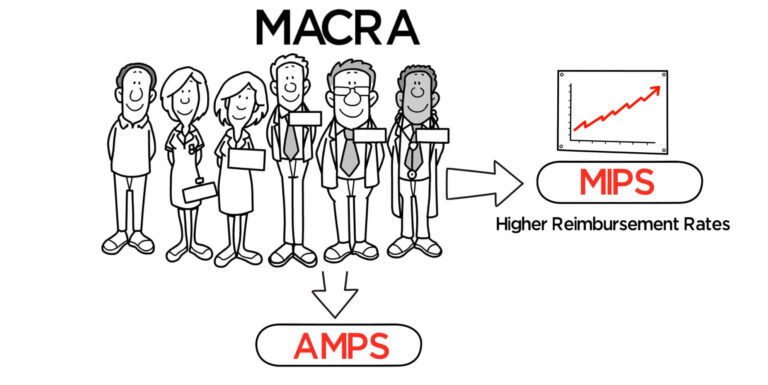MIPS and APMS – MACRA Payment Model FAQ
The Medicare Access and CHIP Reauthorization Act (MACRA) has been a newsworthy subject since it was signed into law on April 16, 2015. As well as the legislation repealing the Sustainable Growth Rate (SGR) and streamlining quality reporting programs into one system, it also establishes a new framework that will reward physicians for value over volume. Payment reform will quickly change Medicare and impact providers.
Merit-Based Incentive Payment System, or MIPS, combines these older programs under one umbrella
- The Physician Quality Reporting System (PQRS)
- The Value-Based Payment Modifier (VBPM)
- The Medicare EHR Incentive Program (Meaningful Use)
- Comprehensive Primary Care Plus (CPC+)
Under MACRA, MIPS payments to providers with scores above the threshold in years 2019 – 2024 will receive proportionally bigger incentive payments up to three times the annual cap with a second threshold for exceptional performance set at the top 25% allowing the highest performing physicians to receive additional payments. But not all will see higher payments, some will see lower payments. While MIPS is largely rooted in ‘Fee for Service’ but modified to tie in ‘Pay for Performance’, whereas the Alternative Payment Model is just a ‘Pay for Performance’ Model.
Under Alternative Payment Models (APMs), from 2019 – 2024, some participating health care providers will be paid a lump-sum incentive payment, there will be increased transparency of physician-focused payment models, and starting in 2026, some participating health care providers will see higher annual payments. Payers, policy makers, and health care organizations are working to define APMs, but the underlying theme will have to do with efficiency and higher quality care provided at a lower cost.
Starting in 2019, providers can choose to base their payment updates upon successful participation in either MIPS or APMs and will be able to decide annually which program is best for them. As we move toward these new Pay for Performance Models, you can prepare by participating in PQRS by reporting quality measures through a qualified registry, and by using a certified EHR.
Editorial team
Recent Posts
-
How One Practice Not Just Survives, but...
August 11, 2021 -
Impacts of Telemedicine & Telehealth on Healthcare
February 23, 2019 -
What is Cloud Computing?
August 11, 2018
Trending Categories
Tags Cloud
- adoption (1)
- APMS (1)
- appointment reminders (1)
- case study (1)
- cloud (1)
- cloud based ehr (1)
- cloud computing (1)
- cost (1)
- COVID 19 (1)
- data sharing (1)
- decreased (1)
- ehr (2)
- election (1)
- Electronic Health Records (1)
- emr (1)
- Healthcare (2)
- insurance (1)
- interoperability (1)
- MACRA (2)
- meaningful use (1)
- medical (1)
- Medical practices (1)
- medicine (1)
- MIPs (1)
- Obama care (1)
- paper vs. electronics (1)
- physician (1)
- population health (1)
- population health management (1)
- PQRS (1)
- practice (1)
- reimbursements (1)
- Telemedicine (1)
- Telemedicine Tagged healthcare (1)
- the cloud (1)
- trump (1)
- vote (1)
Recent Posts
-
How One Practice Not Just Survives, but...
August 11, 2021 -
Impacts of Telemedicine & Telehealth on Healthcare
February 23, 2019 -
What is Cloud Computing?
August 11, 2018 -
EHR vs. Paper: Are physicians more efficient?
August 11, 2018
